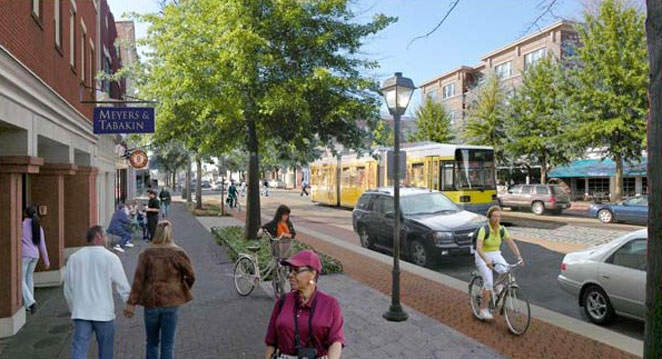 The first step in our “10 Steps To A Slow Home” says that “A Slow Home is located in walkable neighborhood that minimizes the use of your car.”
The first step in our “10 Steps To A Slow Home” says that “A Slow Home is located in walkable neighborhood that minimizes the use of your car.”
One tool that has been very helpful to us in determining the walkabilty of a particular property is the website www.walkscore.com
A “Walk Score” is a number between 0 and 100 that measures the walkability of any address. The range goes from a low score of 0 -24 – which would be classed as car dependent meaning that almost any errand requires a car – to a high score of 90 – 100 – which means daily errands would not require driving. The website calculates the number of amenities within walking distance of any address to generate the score. Any score below 50 means that the location is car dependent.
Of course, we would also encourage further investigation into the actual qualitative characteristics of any neighborhood when determining if the suitability of any particular location, but www.walkscore.com is a great place to start.
Back in August 2009, “Joe Cortright” published an article for “CEOs for Cities” entitled “Walking the Walk: How Walkability Raises Home Values in US Cities.”
Read the full article here:
http://www.ceosforcities.org/pagefiles/WalkingTheWalk_CEOsforCities.pdf
While this study’s findings shouldn’t be surprising to most Slow Homers, it concludes that the vast majority of people are willing to pay more to live in walkable neighborhoods with amenities like shopping, schools, churches and recreation spots close by.
Cortright’s analysis controlled the usual factors that contribute to the value of a house – distance to the city center, job access, size, number of bedrooms and bathrooms, house type, age, etc – with the hopes of revealing the true impact of walkability. He found that:
“In the typical market, an additional one point increase in Walk Score was associated with between a $700 and $3,000 increase in home values.”
“These results show that consumers and housing markets attach a positive value to living within easy walking distance of shopping, services, schools and parks. The property value premium for walkability seems to be higher in more populous urban areas and those with extensive transit, suggesting that the value gains associated with walkability are greatest when people have real alternatives to living without an automobile. “
Home owners place higher value on properties that enable:
1. Living close to work
2. Living close to choice of amenities, ease of access to choices
3. Living close to other people (social opportunities)
4. Living with multiple options for mobility
5. Walking for fitness and health
6. Street vitality as a signal of safety
7. Cost savings from not driving (gas and parking)
8. Time savings from not driving (avoiding traffic congestion)
Living in a walkable neighborhood is one of the founding “Slow Home” design principles. Following the “10 Steps to a Slow Home” is one way to ensure that your home maintains its long term value. We all know that since the collapse of the housing market, the world is forever changed, and purchasing a new home located in car dependent, fringe community seems ill advised at best.
We would like to know what you think about Cortright’s study! Do you think walkability would affect your decision to buy your home? Post a comment and let’s have a discussion!
PLEASE NOTE: The next workshop with architect Andrew Reeves of “Line Box Studio” will be PRE-TAPED but webcast at the REGULAR time – 11am Mountain or 1pm Eastern – We’ll see you in the chat room!



